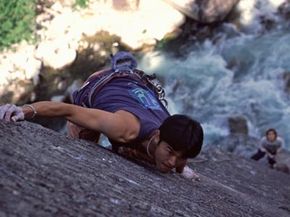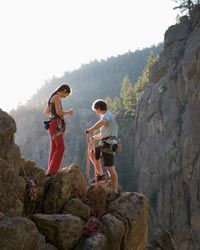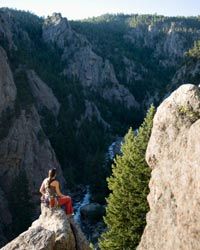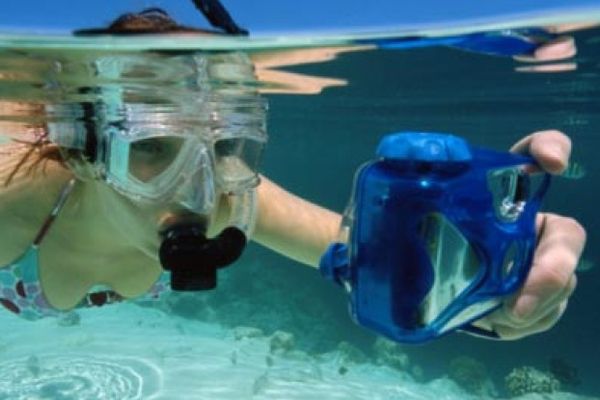One of the most popular adventure sports out there is rock climbing. It's a great way to experience landscapes and views few other people ever get to see. So, it's no surprise that lots of rock climbers want to capture those rare panoramas on film.
Before you can take rock climbing pictures, though, you have to get some experience with the sport. Probably the easiest and safest way to try it out is at an indoor climbing wall. Lots of athletic centers and gyms have their own walls, and they offer classes on procedures and equipment. Usually, the facility will offer supervised climbs with certified instructors, and climbers can qualify for a belay certification that will allow them to climb without an instructor present. (In rock climbing, belaying involves securing yourself at the end of a rope in order to climb.)
Advertisement
Once you get comfortable on indoor climbing walls, grab a climbing partner and check out some of the easier established routes. State and national parks publish information about the location and difficulty of their climbing routes. Joshua Tree National Park is a good example, offering up-to-date information about route closures, local wildlife that might be impacted by climbers, and emergency response contacts.
There's a lot of equipment involved in safe rock climbing, including a helmet, special shoes that allow you to get a better grip on the rocks, hand chalk or gloves, carabiners and harnesses, rope, and equipment for belaying and repelling. If you're establishing your own route instead of using pre-placed bolts, you'll also need to bring along an assortment of hand- and foot-holds (called "protection") to place in the rock. In such cases, the lead climber will place the protection, and the second climber will remove it.
Like all adventure sports, rock climbing is dangerous. It takes a lot of practice and concentration to make the experience as safe as possible, so make sure you're completely comfortable on indoor walls and outdoor beginners' routes before trying anything more challenging. And, since this is just a quick introduction to the sport, see How Rock Climbing Works for lots more information.
Once you're an experienced climber, you'll be ready to photograph your adventures. But what's the right equipment for rock climbing photography?
Advertisement




